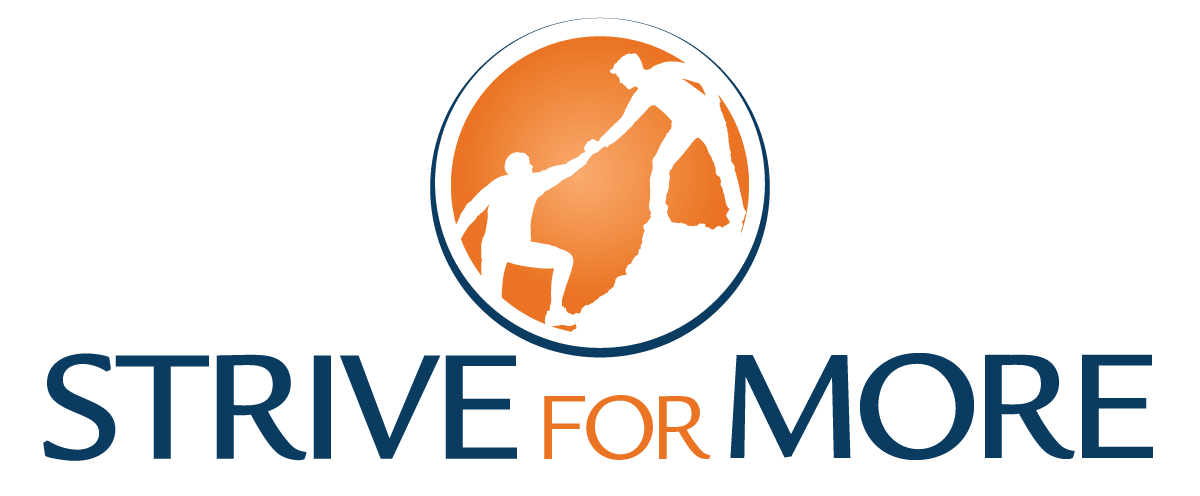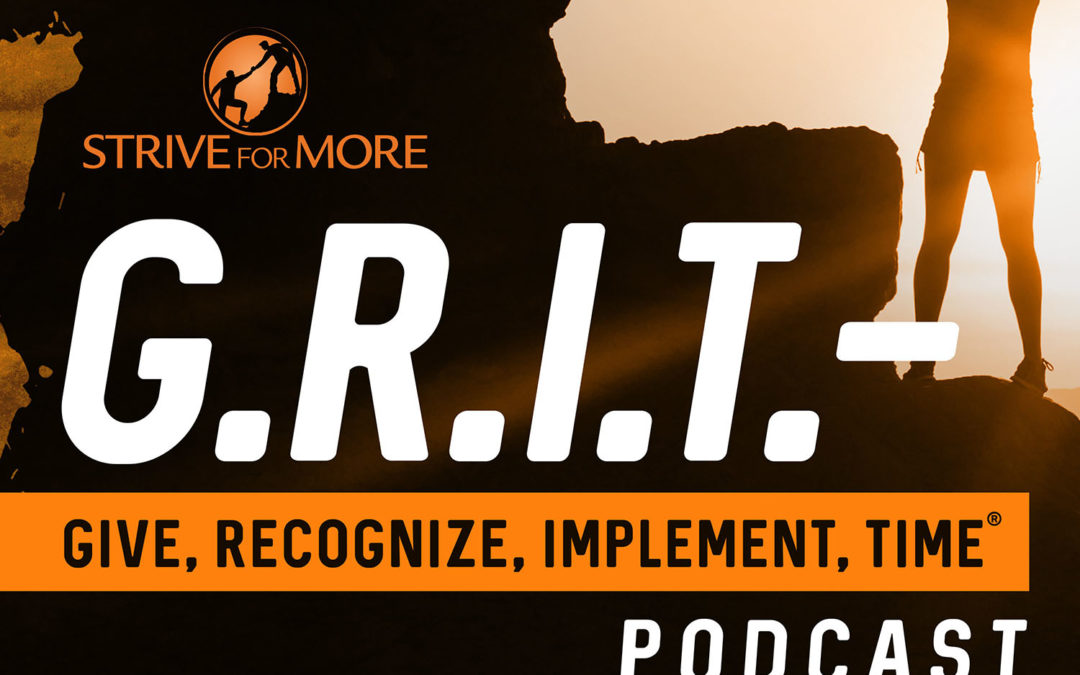It’s a very common question I get asked all along, whether it’s presenting to our team, I’ve been asked to speak at a keynote, or the organization is doing a big virtual event and they’ve asked me to speak, or even in person event and they’ve asked me to speak. Just simply put how do I present that? How do I make sure I come across the way I want? Very, very, common question. So today I’m going to share a couple things that really help answer this question, and one of the most important things in that is we want to do things that are authentic to us. So all the tips and the tricks in the world that are out there and things that I’m going to share today can be helpful, but one of the important things for us as we listen to them is it authentic to me? Do I feel like that’s going to be right for me?
The importance with this is if I do not come across authentically and I just show that I’m going through the motions and doing something because I think it’s going to resonate but I don’t necessarily believe in it or it’s not right for me, our audience is going to know. We’re very good at picking out people who are fake. You get that initial sensation when you’re watching somebody, they’re just doing this because they’ve got to do it or they don’t really care. We have that good BS meter if you will. So that’s one thing that’s hugely important with presenting better is making sure that we are authentic to who we are.
So now that we’ve covered that piece of it let’s talk about some tips and some tricks. The first thing that I always like to start with is know your audience. Who are you speaking to? When we know them it’s going to help influence what we say, how we say it and what we share, because maybe they’re looking for specific things from you. It could be as a customer does your software let’s say meet my specific needs? So let’s say you’re presenting to a potential client and you’re demonstrating your product. If they have a very specific need or use case we’re going to want to make sure that we use that in our presentation. So when we know our audience it’s easier to know what’s going to resonate with them because we’ll know what they’re looking for.
Trick you can use to do this is if you’re speaking at an event or for a company you can actually ask some upfront questions to get what those needs are. What are they looking for? What do your audience typically resonate with? What do they want out of it just as an example. Even with your own internal organization, maybe you’re presenting to a VP, what does your VP care about? What do they want to get out of? So very fundamentally know your audience. Who am I speaking with?
Once we know that then we can determine what do you want them to walk away with? Do you want them to take action? If so, what is that that you’re driving them towards? Maybe I’m making an argument to get additional headcount or I want additional funding. Or if I’m a salesperson I want them to walk away thinking, yeah absolutely, this product is going to solve what we need and we’re going to start writing up a contract and get this deal done. Is it more educational? Do you want them to think about something differently? Do you want them to understand something different and learn? What do you want them to walk away with? Is it a TEDX Talk or a TED Talk? And you want them to feel a certain way, like a Tony Robin seminar. My guess is he wants you to very much feel empowered when you’re done with that weekend or that hour, whatever it happens to be. Do I want to elicit them to feel a certain way?
I have a very good friend of mine I’m going to plug Kristy Mandour, she’s the one who taught me what she called the hat trick. How do you want them to feel, how do you want them to act, and how do you want them to think? These three things can help us know how to actually start crafting our speech and present better, because now we not only know who our audience is that we’re speaking to but we also know what we want them to walk away with. What do they want to get out of it? And that can help dictate how we present and speak to it, to elicit those feelings, those thoughts, and drive them towards a certain action. So that’s very helpful in presenting better as well, knowing how to engage the audience by driving them towards something.
Because if I want them to feel excited and empowered then I can start using this trick as well, which is to tell stories, playing off the crowd, feeding off that energy. Instead of just talking at somebody and dictating here’s what we’re going to do, X, Y, and Z, and this is the way that it has to get done. Thank you for your time. That can be very much like a lecture in school. We could tune people out. We’re not really engaging them, we’re just speaking at them versus speaking with them.
However, if we do tell stories then it’s easier to create things that relate to them, things that they recognize in their own lives, things that they understand and resonate with them. Through metaphors, through story, it can help actually overcome some hurdles of just talking information at them, or pulling at their heartstrings, we’re engaging them.
So what stories can I tell or share that directly relate to them and help bring home those points that I’m talking about? And as I do that can I play off the crowd, can I gauge how they’re reacting and what they’re feeling? Because I can see it in their eyes, I can see the head nodding. Have I lost them? Is there someone in the crowd who really is with me and can I call that out? Yeah, you know this gentleman right here, I can see it, all that nodding yeah, he gets it. Bringing people into the fold is also a trick that can help engage people. Bring them back into the fold and really engage them should we have lost them?.
One last thing that I’ll share real quick is how do we actually present the information in terms of what order, what level of detail? I do believe that it’s a lot easier to go from a high level to a lower level versus going from a low level to a higher level. The reason behind that is if I go too much in the weeds right up front I very much run the risk of losing people. But if I introduce something to them at a high level then it’s easier to drill down into that information because they’ve already got a base understanding of what we’re going to cover, or what the concepts are, and it’s easier to go from that 50,000 foot view down to that one foot view.
Part of it also may be I don’t necessarily need to go down to that weed. For us who are individual contributors and very much in the day to day, we live, we breed it, versus people who are say at the vice president level. They may have very well done that in their career but this point in their career that’s not what they’re responsible for. They are much more high level and strategic in terms of say multiple business lines and teams and units in a holistic strategy versus I’m actually going to sit there and code in python this statistical analysis let’s say.
So as we present what is that appropriate level of detail to get into, and can I speak directly to what that audience wants and is looking for? Because if I’m presenting that VP they’re not going to want to get into the weeds and into all that detail, they’re going to want to know what’s pertinent and relevant to them, which is much more high level.
Now that’s not to say that we can’t share those details but it makes it a lot easier to present it at a high level and then get into the detail should we need to, or should we even be asked to do it as well. But it’s a lot harder to start in the weeds and then zoom out because we often lose people, it often causes the presentation, the conversation, to go awry and we have a much harder time bringing people back into the fold, re-engaging them and then getting to where we want it to go because we’ve already lost them two minutes into the presentation.
So with that what are those tricks? First of which let’s be authentic, be who we are. If I’m not an energetic person naturally that’s bouncing all over the place like some presenters do that’s not going to work for me because it’s going to feel forced and fake and audiences pick up on that. So let’s do things that are authentic to us, that are going to come across in a much better way.
And then let’s know our audience. What is it that they’re looking for? Who am I speaking to? What works well and resonates for them? And then what do I want them to walk away with? When I know that it makes it easier to craft how I share and present information to them and what stories I use, how I play off the crowd, questions I pose, asking for feedback and comments during it, comes much easier to put those elements into the presentation. And then starting at a high level and drilling down into the detail as needed, if needed, as well.
So these are just some common tricks that can help us present better, whether it’s internally to an organization or delivering a keynote speech at a conference, these things can help us really hone our craft as presenters.
So I hope you enjoyed today, I hope you got something out of it. I love talking about communication so if you have any questions please let me know, be more than happy to answer them for you here on the show. And in the meantime remember, if we never ask we’ll never know, and if we never try we never will. Be the movement in your life.
Listen to all of our episodes here.
Learn More About How We Help You Harness Your Resilience Through G.R.I.T. – Give, Recognize, Implement, Time®& Find More Actions You Can Take Right NOW!
To learn more about our signature coaching approach which DOES help people all over the world stay focused, overcome, and achieve, please click here.
Want to Assess Your G.R.I.T. – Give, Recognize, Implement, Time® & get a tangible gauge of key human characteristics that WILL make you successful?
Take our G.R.I.T. – Give, Recognize, Implement, Time assessment now and find out!

